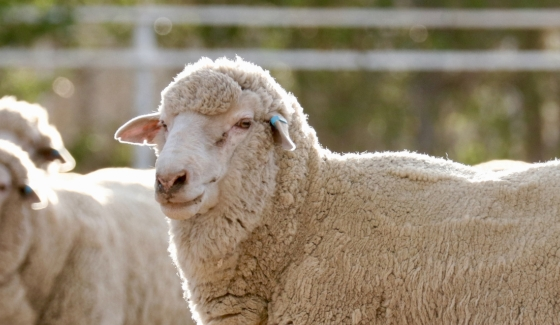
Getting a good lambing result out of maiden ewes remains as a challenge for many producers. The traditional maiden ewe is one that goes to the ram for the first time at 19 months of age. However, in a maternal composite, first cross ewe or shedding-ewe based system it is more likely to be a ewe joined at 7-9 months of age. Whichever of these two classes you are working with the principles are the same.
The size of the gap
The difference between the reproductive rate of maidens and their older counterparts is usually around 20%. In some cases, this can be considerably higher. The aim of maiden ewe management is to close the gap between the performance of the maidens and that of the older ewes. Interestingly, this area has received relatively little research focus over the years with a lot of work being completed on mature ewes and recently some on ewe lambs.
The Magnificent Maidens Producer Demonstration Site (PDS)
With the valued support of MLA, we are currently running a PDS project around the country to help understand and demonstrate the key factors that are required for a successful maiden ewe joining. These sites are each focusing on slightly different aspects of maiden ewe management and are comparing their normal management practice with a ‘best-bet’ approach for different times of there productive cycle. We will continue to provide updates on this web page as this project progresses.
Up to weight
One of our best-bet concepts that is being tested via this PDS project is the impact of weight on reproductive output in maidens. We know from previous work that weight is a key driver of reproduction in sheep of all ages. Generally, maidens are less responsive to weight then both ewe lambs and adult ewes which is an interesting finding. Hopefully throughout the course of this project we will generate additional numbers around that and confirm that it is consistent across a range of scenarios. We believe that the proportion of mature weight is an important contributing factor for live weight. Our current best-bet management suggestion is to aim to have your maiden merino ewes to hit 90% of their mature weight by the time the rams go in. For maternal ewes this figure is close to100%. This will be confirmed over the course of the project.
Key points to reaching weight targets:
1. Know what your target is, have an actual weight you are aiming to reach.
2. Graph it out, starting at a birthweight of 4kg to 6kg depending on your genotype and ending with your desired weight at joining. Graphing it out helps you to think about when it is going to be easy to put weight on and when it is going to be hard. This allows you to set sub-targets and monitor your progress.
3. Start early – if your lambs are already good at weaning, the distance to the finish line is easier to achieve. Focus on getting good lamb growth rates while the grass is green. This doesn’t mean leave them on mum longer though – early weaning and targeted feeding is still a great option.
4. Weigh 50 sheep regularly. The best way to reach a target is to regularly monitor progress against a target. Things like a worm burden you didn’t pick up early enough, or a stubble not providing as much nutrition as you thought are all much more likely to be detected from regular weighing.
5. Know what they need – doing a regular energy budget and taking steps to make sure they are receiving what they need is a key strategy to meeting your targets.
Good condition for lambing
We know very well how condition score of mature ewes impacts on the survival of their lambs. This is even more important when it comes to maiden ewes. Lamb survival is even more responsive to condition score in maiden ewes than it is in adult ewes. Therefore, lambing your maiden ewes in very good condition is important to ensure all of the good work you have done getting lambs on board is realised in actual lambs weaned. Similar to adults, this is even more important for twin bearing ewes.
Lambing paddocks
The same principles apply for adults as they do for maiden ewes, doing all that you can in the lambing paddock to ensure privacy, protection and plenty of feed is important. Privacy is enhanced by reducing mob size – the less ewes in the paddock the better. Protection is enhanced through lambing the more vulnerable ewes in the paddocks with the best shelter from prevailing weather. Plenty of feed on offer in the paddock of above 1200kg and preferably 1500kg of DM /ha is a good target to have. This can be achieved by confinement feeding in mid pregnancy allowing pasture growth to be at maximum for longer.
Priority rather than peasants
Achieving a great outcome in maiden ewes requires a mindset shift from treating them as a mob that can clean up laneways and rough paddocks to treating them as the most important sheep on the property. By setting targets, having a plan to achieve the targets and monitoring progress as you go, this change can be achieved.
Sign up to Magnificent Maidens to receive regular information about managing your maidens HERE




.jpg)



